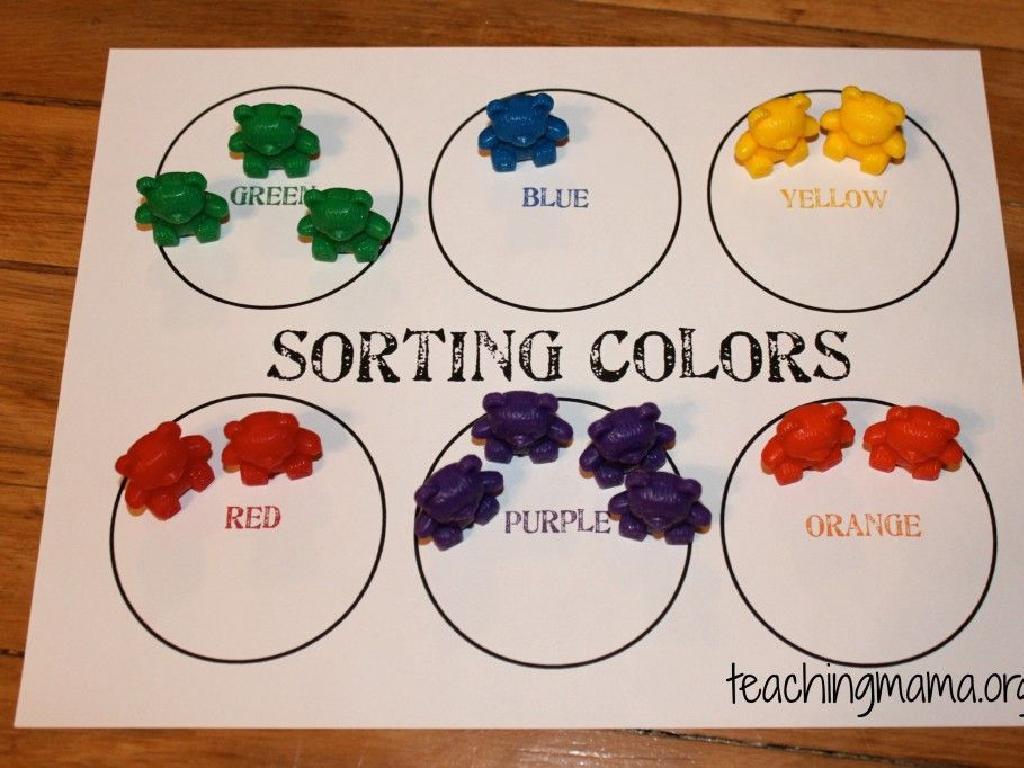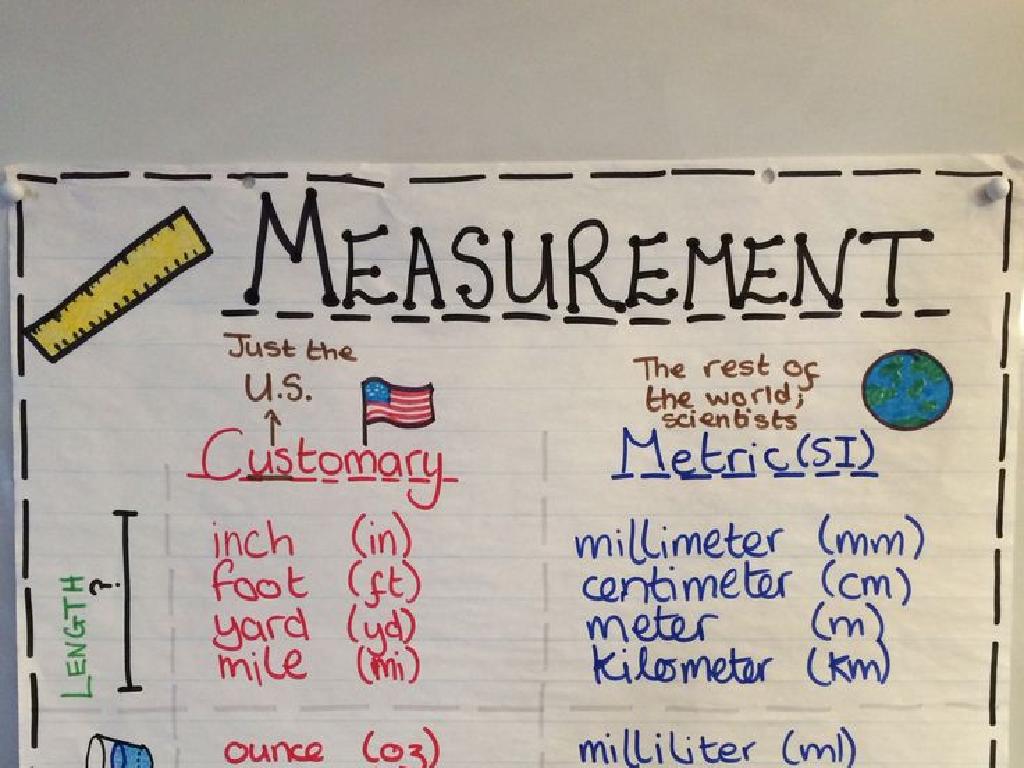Box Plots
Subject: Math
Grade: Eighth grade
Topic: One-Variable Statistics
Please LOG IN to download the presentation. Access is available to registered users only.
View More Content
Introduction to Box Plots
– Explore one-variable statistics
– Define a Box Plot
– A graphical representation of data that shows the distribution via quartiles.
– Significance of Box Plots
– Box Plots summarize data from a single variable for easy comparison.
– Interpreting Box Plots
– Learn to read median, quartiles, and outliers from a Box Plot.
|
This slide introduces the concept of Box Plots within the study of one-variable statistics. Begin by explaining that one-variable statistics deal with data that has a single variable, focusing on its distribution and central tendency. Define a Box Plot as a visual tool that represents the distribution of a dataset through its quartiles, showing the median, upper and lower quartiles, and potential outliers. Emphasize the importance of Box Plots in summarizing large data sets and making comparisons easy. Conclude by explaining how to interpret the different parts of a Box Plot, including the median, quartiles, and identifying outliers. This will set the foundation for students to understand and create their own Box Plots in subsequent lessons.
Understanding Data Distribution with Box Plots
– Define Data Distribution
– How values are spread over a range. Think heights of classmates.
– Real-life distribution examples
– Daily temperatures, test scores, or ages at a birthday party.
– Box Plots and data interpretation
– Visual summary of data showing median, quartiles, and extremes.
– Advantages of using Box Plots
|
This slide introduces the concept of data distribution, which is crucial for understanding how data is spread across a range. Use relatable examples like the heights of students in the class or daily temperatures to illustrate this concept. Explain how box plots provide a visual summary of data, showing the median, quartiles, and extremes, which helps in quickly understanding the distribution of data. Emphasize the advantages of box plots in comparing distributions between different data sets and identifying outliers. Encourage students to think of other real-life examples of data distribution and how box plots could be useful in those scenarios.
Understanding Box Plots
– Explore the Five-Number Summary
– Consists of min, Q1, median, Q3, and max
– Identify Minimum and Maximum values
– Lowest and highest data points in a set
– Define Quartiles: Q1, Median (Q2), Q3
– Q1 is 25th percentile, Q2 is 50th, Q3 is 75th
– Calculate the Interquartile Range (IQR)
– IQR = Q3 – Q1, measures data spread
|
This slide introduces students to the components of a box plot, which is a visual representation of data distribution. The Five-Number Summary is the backbone of a box plot, including the minimum value, first quartile (Q1), median (Q2), third quartile (Q3), and maximum value. Emphasize the importance of quartiles in understanding the spread and central tendency of data. The Interquartile Range (IQR) is a measure of variability and helps identify outliers. Provide examples of calculating each component and constructing a simple box plot. Encourage students to practice with data sets to solidify their understanding.
Creating a Box Plot
– Collect your data set
– Calculate the Five-Number Summary
– Minimum, Q1, Median, Q3, Maximum
– Plot data on a number line
– Include minimum, Q1, median, Q3, and maximum
– Draw the box and whiskers
– Box represents Q1 to Q3; whiskers extend to min and max
|
This slide outlines the steps to create a box plot, which is a graphical representation of a data set. Start by gathering a set of data related to a single variable. Next, calculate the Five-Number Summary, which includes the minimum, first quartile (Q1), median, third quartile (Q3), and maximum of the data set. Then, draw a number line that is appropriate for the data range and plot these five values. Finally, shade the box between Q1 and Q3 and draw whiskers from the box to the minimum and maximum values. This visual representation helps to identify the distribution, central value, and spread of the data. Encourage students to practice by creating box plots with different data sets to understand how the shape of the data is represented.
Reading Box Plots
– Identifying the Median
– The median divides the data into two halves.
– Understanding data spread
– Spread is the range within the quartiles.
– Comparing distributions
– Use Box Plots to compare different data sets.
– Interpreting Box Plots
– Box Plots summarize data using five key points.
|
This slide introduces students to the concept of Box Plots as a graphical representation of data in descriptive statistics. Emphasize the importance of the median as the middle value that separates the higher half from the lower half of the data set. Discuss how the spread of data is represented in a Box Plot through the interquartile range (IQR), which shows the range of the middle 50% of the data. Highlight how Box Plots allow for easy comparison of different data sets by visually representing the median, spread, and outliers. Encourage students to interpret Box Plots by identifying the minimum, first quartile, median, third quartile, and maximum values. Provide examples of Box Plots for students to practice reading and interpreting the data.
Box Plots in Action: Analyzing Test Scores
– Real-world example with test scores
– Consider a class’s math test scores as an example.
– Analyzing box plot components
– Examine quartiles, median, and range in the plot.
– Impact of outliers on interpretation
– Outliers can skew our understanding of data.
– Discussing box plot insights
– Use box plot to discuss test score distribution.
|
This slide aims to provide students with a practical understanding of box plots through the example of test scores. Begin by explaining how test scores from a class can be represented on a box plot, highlighting the median, quartiles, and range. Discuss how to identify outliers and their effect on the data’s interpretation. Emphasize the importance of box plots in summarizing a large set of data and providing insights into its distribution, such as identifying if the scores are spread out or clustered together. Encourage students to think critically about what the box plot reveals regarding the class’s performance and understanding of the material.
Class Activity: Crafting Box Plots
– Collect favorite numbers 1-100
– Calculate the Five-Number Summary
– Minimum, Q1, Median, Q3, Maximum
– Create individual box plots
– Use the summary to draw your plot
– Share and discuss class findings
|
This activity is designed to provide hands-on experience with box plots. Start by having each student select their favorite number between 1 and 100. Then, as a class, work together to find the minimum, first quartile (Q1), median, third quartile (Q3), and maximum values. Students will use this Five-Number Summary to create their own box plots on graph paper. Once completed, students will share their box plots with the class and discuss any patterns or outliers they notice. This will help them understand how box plots visualize data distribution and variation. Possible activities include comparing results between different groups, discussing the impact of outliers, or exploring how changing one number in the dataset affects the box plot.






